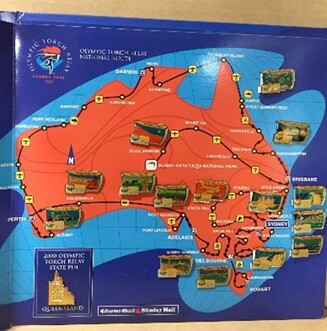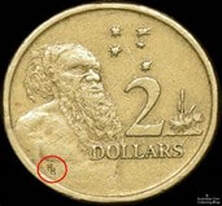Our small group continues to grow post Covid-19 as people reignite their interest in coins and others get stimulated through word of mouth.
David presented the group with a number of handouts related to decimal currency key dates and mintages for the various denominations. He also spoke to his handout that included large scale photos showing coin faults and what are in demand by collectors. These included 20 cent coins with the 2004 Big Head, 1966 Wavy 2 and 50 cent coins with the emu double bar and 2000 Millennium incused (depressed) flag.
Bill circulated a number of silver (92.5%) coins including a $10 1982 Brisbane Commonwealth Games coin, a South Australian $10 coin and a 1982 proof coin set celebrating 150 years.
Wendy showed a very interesting 2000 Olympic relay pin album that depicted a map of Australia showing the towns where the Olympic torch travelled to prior to the 2000 Olympic Games in Australia. She also presented a bag of old pre-decimal coins to remind us all of the various denominations we all said good bye to in 1966.
Doug brought along a number of low mintage pre-decimal coins including the first threepence dated 1911 (mintage 4M); the first sixpence dated 1910 (3M minted Edward 7th head) and 1911 (1M minted) George 5th head). Also the first shilling 1910 (3M minted) and the first merino head 1938 (mintage 1.4M). Comment was made how small and insignificant the threepences were and how both the threepences and sixpences were so thin and very light compared to the decimal currency.
He also circulated a 1993 collectors Silver Kangaroo $1 coin (1 oz. of fine silver). This coin was the first 40mm legal 0.9999silver coin produced by the RAM. It was also the first to have reverse frosting. The kangaroo is facing the opposite direction to the Australian Penny Kangaroo and was designed by Horst Hanne Director of Design and Engraving at the Royal Australian Mint. His initials HH appear on a number of $2 coins.
Doug Smith
Convenor
Coin Collectors








